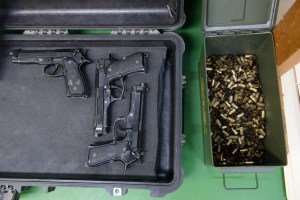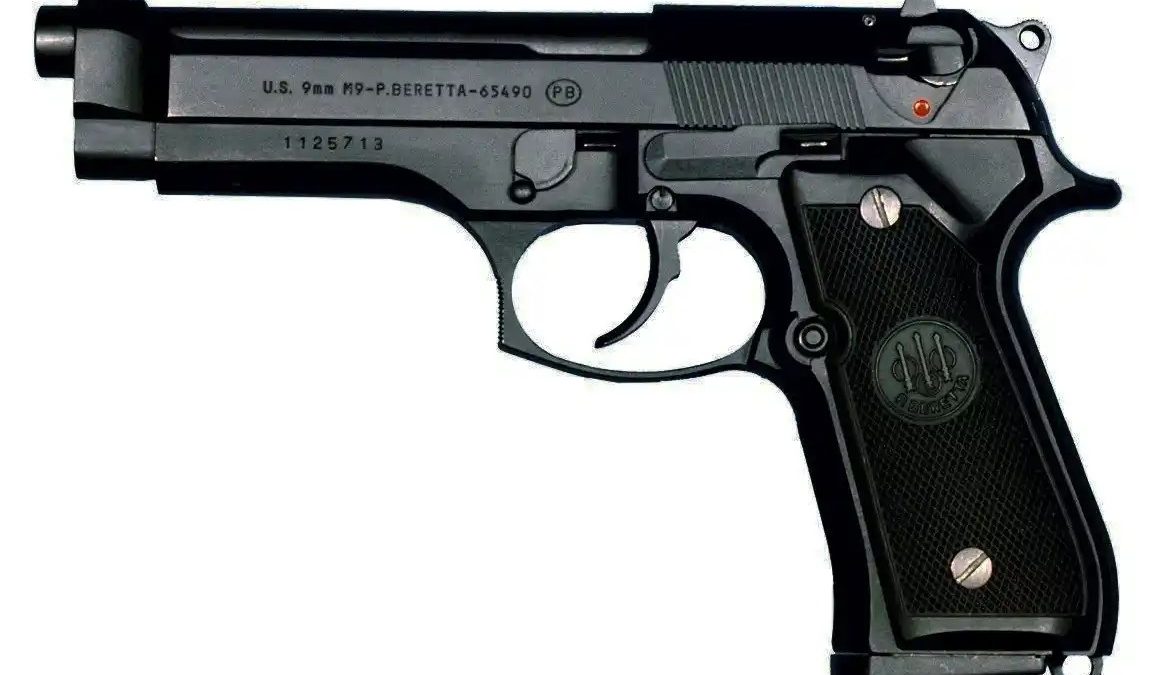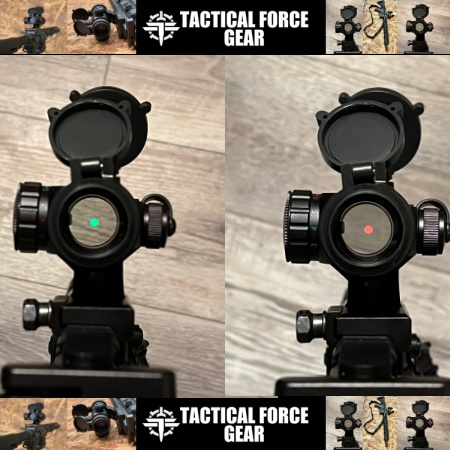The chunk-chunk of the M16 rifle is iconic, and the thump of the M2 Browning unmistakable. But for over thirty years, another sound echoed across training ranges and battlefields: a sharp, authoritative crack that signified the presence of the American warfighter. This sound belonged to the Beretta M9, the standard-issue sidearm of the U.S. Armed Forces from 1985 to the late 2010’s. Carried in the holsters of soldiers, sailors, airmen, Marines, and Coast Guardsmen alike, the M9 served from the jungles of Panama to the frozen peaks of Takur Ghar in Afghanistan. It was a symbol of American military might, both revered and criticized, battle-tested, and debated. Its story is one of controversy and triumph, of adaption and endurance, and at its core, about a weapon that found its place in history for 3 decades before stepping aside for the next generation of firearms.
Specifications:
- Caliber: 9x19mm Parabellum
- Action: Short recoil, semi-automatic
- Barrel Length: 4.9 inches
- Overall Length: 8.5 inches
- Weight (unloaded): Approximately 33.3 oz (945g)
- Magazine Capacity: 15 rounds (standard)
- Sights: Standard fixed sights (some variants with tritium night sights)
- Frame Material: Aluminum alloy
- Slide Material: Steel (early models prone to cracking, later addressed with modified design)
A New Sidearm for a New Era
The M9’s story begins in the late 1970’s, when the U.S. Military sought to replace the M1911A1, the legendary .45 ACP workhorse that had served since World War I. Though beloved for its power and durability, there was no doubt that the M1911 had reached the twilight of its service life. The Department of Defense, through the Joint Service Small Arms Program, sought a modern, high-capacity pistol chambered in NATO standard 9mm. This move was aimed at streamlining logistics with all U.S. Allies at the time. After extensive testing and head-to-head trials, the Beretta 92F, an Italian design, emerged victorious in 1985. Modified to meet U.S. Military standards, it was rebranded the M9 and officially adopted as the new sidearm of the American military. However, controversy surrounded the decision. Some critics whispered of bribery and biased testing, fueling skepticism about the M9’s selection. Whether justified or not, the pistol was now the official handgun of the U.S. Armed Forces, and it had a long road ahead.
Trial By Fire
Transitioning from the M1911 was no small task. Generations of servicemembers had trained with the .45, and many were quite skeptical of the 9mm’s stopping power. However, the M9, with its 15 round magazine, lighter frame, and modern double-action/single-action mechanism, represented the future. The M9’s baptism by fire came during Operation Desert Storm in 1991. U.S. troops carried it into the sands of Iraq and Kuwait, where it performed reliably, though not without some reported issues in the extreme conditions. The war would be the first of many deployments for the M9. From the Balkans to the Global War on Terror, it would accompany American forces into the chaos of modern warfare.
Unfortunately, like many tools in the U.S. arsenal, the M9 was not without its drawbacks, mainly:
- Slide Failures: Early models experienced catastrophic slide fractures, with some breaking apart after extensive use, this issue led to a redesign, reinforcing the slide to prevent breakage.
- Magazine Problems: Some issued magazines, particularly those from outside manufacturers were prone to jamming in sandy environments, frustrating troops in Iraq and Afghanistan.
- Ergonomics: While the M9’s frame fit many hands, those with smaller grips found it bulky and difficult to manipulate compared to more modern polymer-framed handguns
Despite these concerns, the M9 endured. Its silhouette became an unmistakable part of the American military image, holstered at the sides of warriors who fought across decades of conflict.

Adaptation and Evolution
The M9 was also not a static weapon; it evolved with the times. In 2006, the M9A1 was introduced, featured an integrated accessory rail for mounting lights and lasers, improving its tactical versatility. Other variants emerged, such as the M9A3, with an improved grip, threaded barrel for suppressor use, and enhanced sights. Even so, the world of military sidearms was moving forward. More compact, modular handguns with polymer frames and better ergonomics were taking center stage. The writing was on the wall: the M9’s reign was coming to an end.
Changing of the Guard
In 2017, after over three decades of service, the U.S. Army announced the Modular Handgun System (MHS) competition to find the M9’s successor. The winner? Sig Sauer’s P320, designated as the M17 (full size) & M18 (compact). Offering modularity, improved ergonomics, and compatibility with modern optics, the M17/M18 series became the new standard for the U.S. Army. The other branches soon followed suit, signaling the gradual retirement of the M9 from front-line service. The era of the Beretta 92 series in official U.S. Military capacity was ending. In 2025, if you arrive at a military installation, you can rest assured that the MP’s sidearm will no longer be the storied M9, but rather the M17/M18 series, as almost all M9’s have been removed from front-line roles.
A Legacy Forged in Combat
Though its time as America’s standard sidearm is over, the M9’s place in history is undeniable. It was there when America fought Saddam’s army in the Gulf War, and when troops heard the dreaded “F##kin Irene” in Mogadishu. It served when Marines were in the hellish warscape of Fallujah, and when SOF teams hunted down high-value-targets in the mountains of Afghanistan. For over 30 years, it served alongside countless warriors, witnessing the bravery, sacrifice, and unwavering spirit of those who carried it into battle. Some loved it, some hated it, but none can deny its impact. The M9 is fading from active duty, but it will never truly disappear. It remains a symbol of an era, a testament to those who carried it, and a 9mm salute to American military history.
Read the full article here


